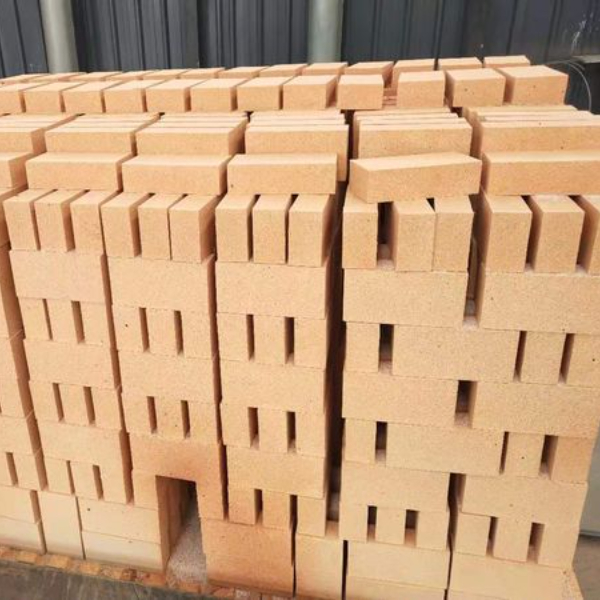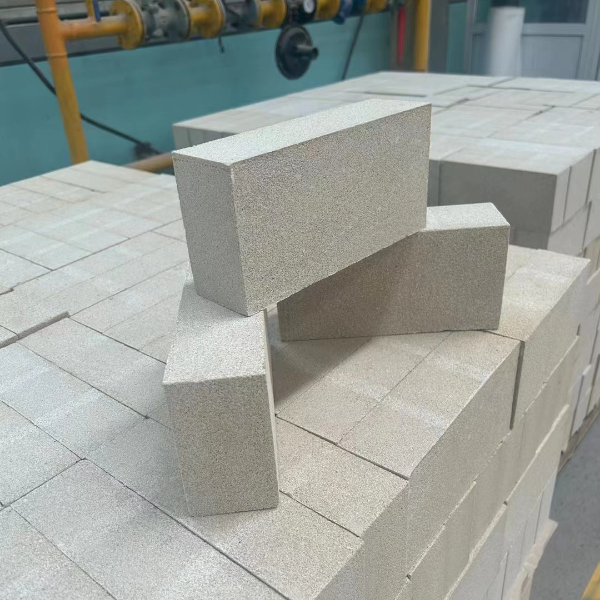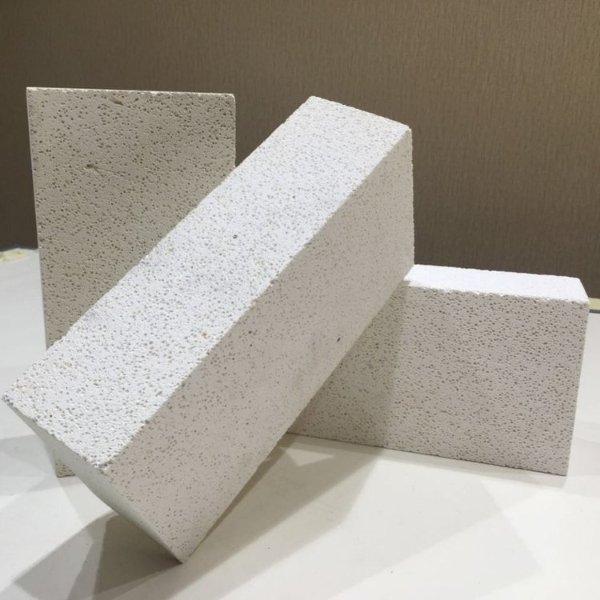Quels sont les types de briques isolantes légères?
Les briques isolantes légères font référence à des produits en briques réfractaires façonnés avec une structure poreuse à l'intérieur.. Ils ont une faible densité volumique, porosité élevée, et une excellente isolation à haute température. On peut aussi les appeler briques réfractaires légères ou briques isolantes légères.
Introduction à la brique isolante légère
Les briques isolantes légères sont divisées en plusieurs types selon les matières premières utilisées. Par exemple, ceux en argile, silice, et à haute teneur en alumine sont appelés briques d'argile légères, briques de silice, et briques légères à haute teneur en alumine.
Quelles sont les briques isolantes légères courantes?
Brique isolante légère en terre cuite

Briques isolantes légères en terre cuite se réfèrent aux briques réfractaires légères avec une teneur en aluminium de 30%-46%. Utiliser la méthode combustible, ils sont produits à partir d'argile ou de clinker léger et d'argile plastique comme matières premières principales. La densité apparente est de 0,75 à 1,20 g/cm3, la résistance à la compression est de 2,0 à 5,9 MPa, la conductivité thermique est de 0,221 à 0,442 W (m.k), la température de fonctionnement est de 1200-1400°C, et il est utilisé dans divers fours industriels sans contact avec la fonte. et matériaux d'isolation qui sont des gaz non corrosifs.
Briques isolantes légères à haute teneur en alumine

Briques isolantes légères à haute teneur en aluminium se réfèrent aux briques réfractaires légères avec une teneur en AL2O3 supérieure à 46%. Ceux fabriqués à partir de clinker de bauxite naturel à haute teneur en alumine comme matériau principal sont appelés briques légères ordinaires à haute teneur en alumine.; celles constituées d'alumine fondue ou frittée comme matière première sont appelées briques de corindon léger, et la phase cristalline principale est principalement du corindon. Les briques légères à haute teneur en alumine sont généralement produites par la méthode de la mousse, avec une densité volumique de 0,4 à 1,35 g/cm3, une porosité de 66%-75%, une résistance à la compression de 1,3 à 8,1 MPa, et une conductivité thermique de 0,291-0,582W (m.k) . La température de fonctionnement des briques légères ordinaires à haute teneur en alumine est de 1 350 à 1 500 °C., et ils conviennent aux fours utilisant de l'hydrogène, CO, et autres gaz comme atmosphères protectrices. La température d'utilisation des briques légères en corindon atteint 1650-1800°C et peut être directement exposée au revêtement du four de la flamme., mais il ne convient pas aux pièces corrompues par les scories fondues.
Brique isolante légère en mullite

Brique isolante légère en mullite: fait référence à une brique réfractaire légère avec une teneur en AL2O3 de 50%-85%. C'est un matériau d'isolation thermique de haute qualité avec de la mullite comme phase cristalline principale et phase de liaison.. Les principales caractéristiques sont la résistance structurelle à haute température, fluage à basse température, petit coefficient de dilatation thermique, forte résistance à la poussière, et une excellente résistance aux chocs thermiques. En fonction de la teneur en aluminium et de la densité volumique, la température de fonctionnement est de 1 350 à 1 700 °C et la couche de travail du four peut être directement exposée à la flamme.
Brique d'isolation thermique en silice
Briques d'isolation thermique en silice se réfèrent aux briques réfractaires siliceuses thermiquement isolantes avec une teneur en SIO2 supérieure à 90% et une densité volumique inférieure à 1,2g/cm3. La densité apparente est de 0,9 à 1,1 g/cm3, la résistance à la compression est de 2,0 à 5,9 MPa, la conductivité thermique est de 0,35 à 0,42 W (m.k), et la température de fonctionnement est de 1200-1500°C. Il convient aux fours à haute température qui n'entrent pas en contact avec les scories. Il est utilisé comme matériau d'isolation thermique pour le revêtement en briques de silice des hauts fourneaux chauds à haute température des grands hauts fourneaux et comme isolation thermique de la maçonnerie en briques de silice des fours à verre..
Brique isolante légère Anorthite
Principalement divisé en deux types, l'un est constitué d'anorthite comme matière première principale, et l'autre est constitué de briques de mullite légères combinées à l'anorthite avec une phase de liaison à l'anorthite comme composant principal (la matière première cyanite doit être ajoutée) Ses caractéristiques sont une faible densité volumique, faible conductivité thermique, bonne résistance aux chocs thermiques, et forte résistance aux atmosphères réductrices. La température de fonctionnement est de 1100-1300°C. Il convient aux revêtements d'isolation thermique des hauts fourneaux chauds, fours de trempage, et fours de chauffage dans l'industrie sidérurgique, et divers fours de craquage catalytique dans l'industrie pétrolière.
En plus des briques isolantes légères couramment utilisées ci-dessus, il existe également des briques réfractaires légères adaptées à la résistance à la corrosion alcaline, comme les briques isolantes en magnésie, briques isolantes en magnésie-chrome, briques isolantes chrome-magnésie, briques isolantes en zircone, Briques isolantes légères en carbure de silicium, etc..
 Usine de réfractaires de Rongsheng
Usine de réfractaires de Rongsheng
WeChat
Scannez le code QR avec wechat